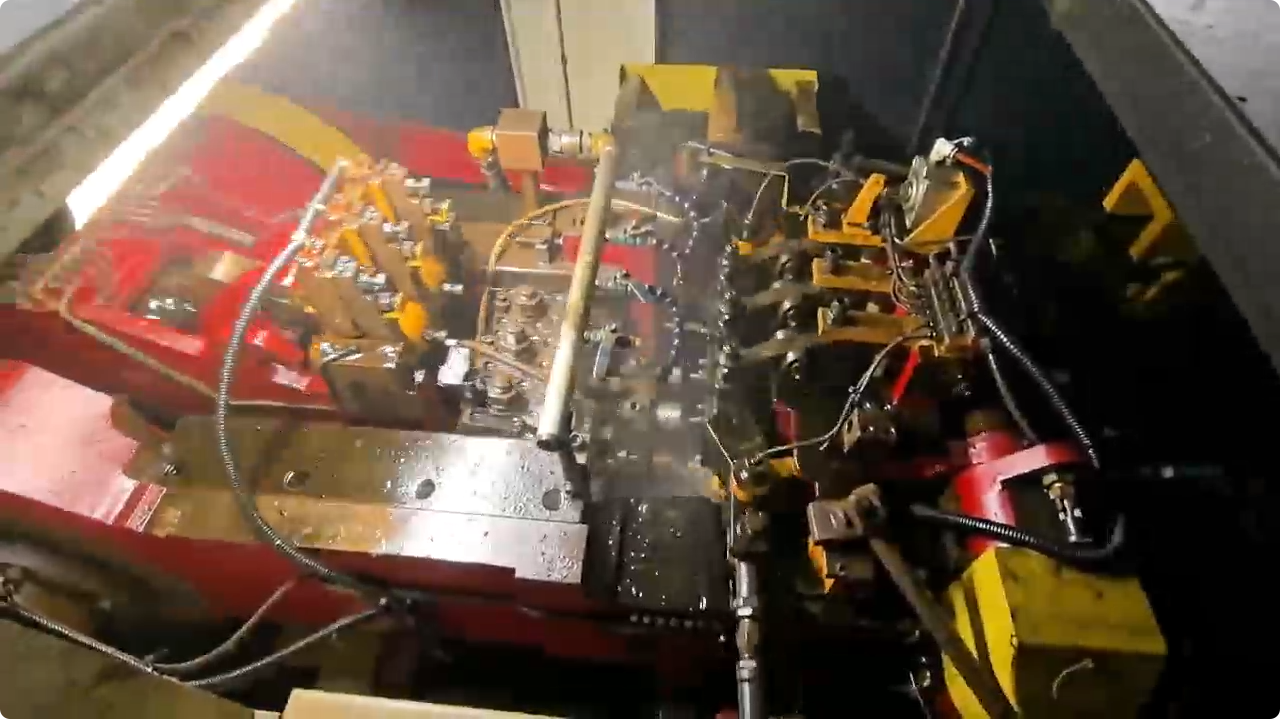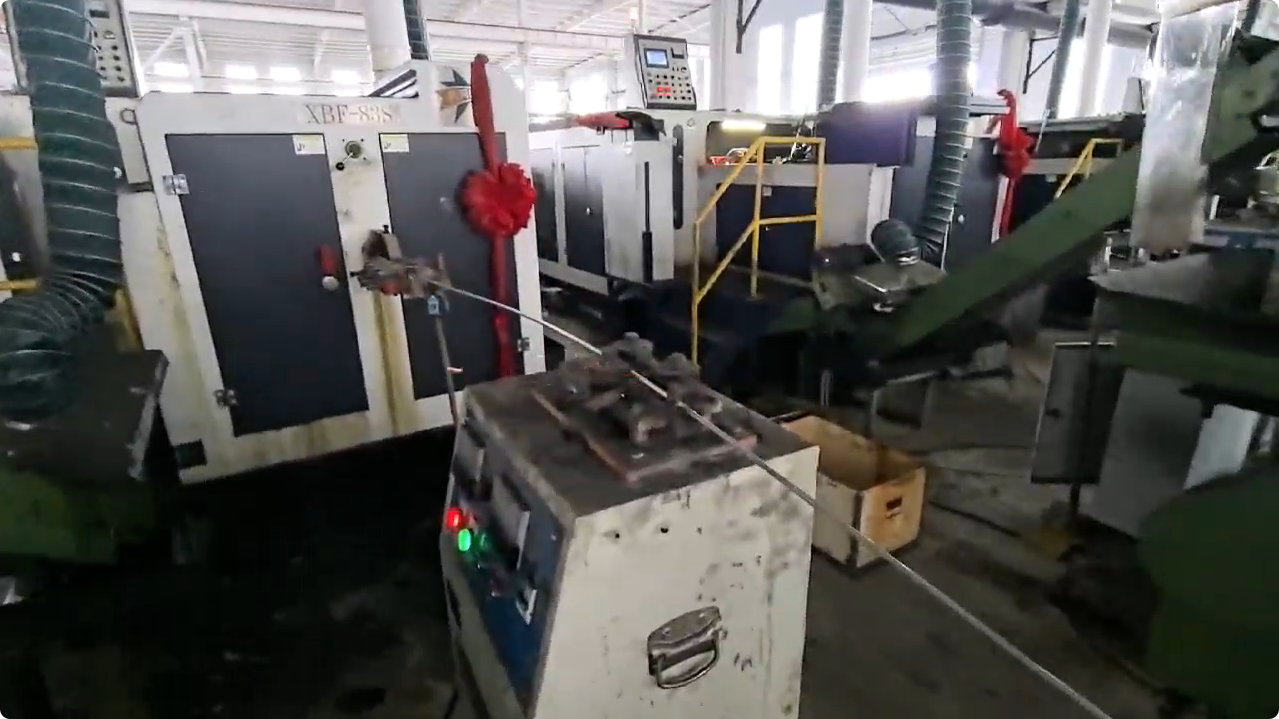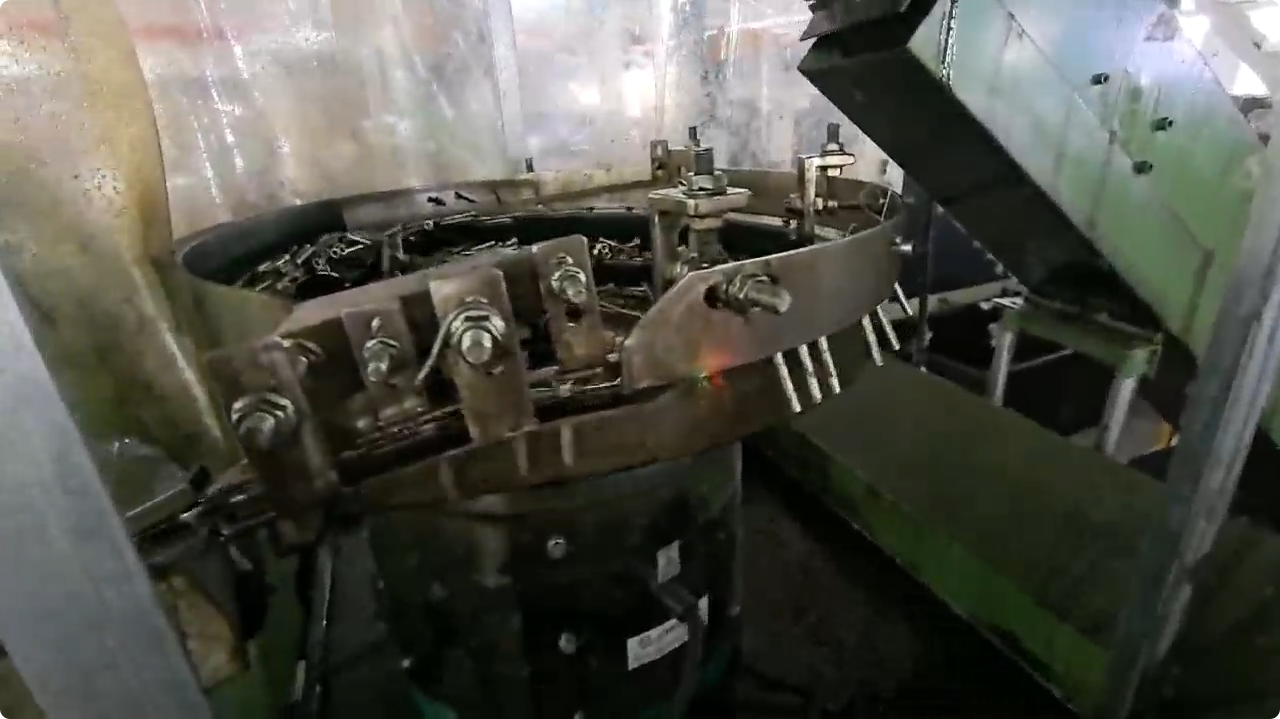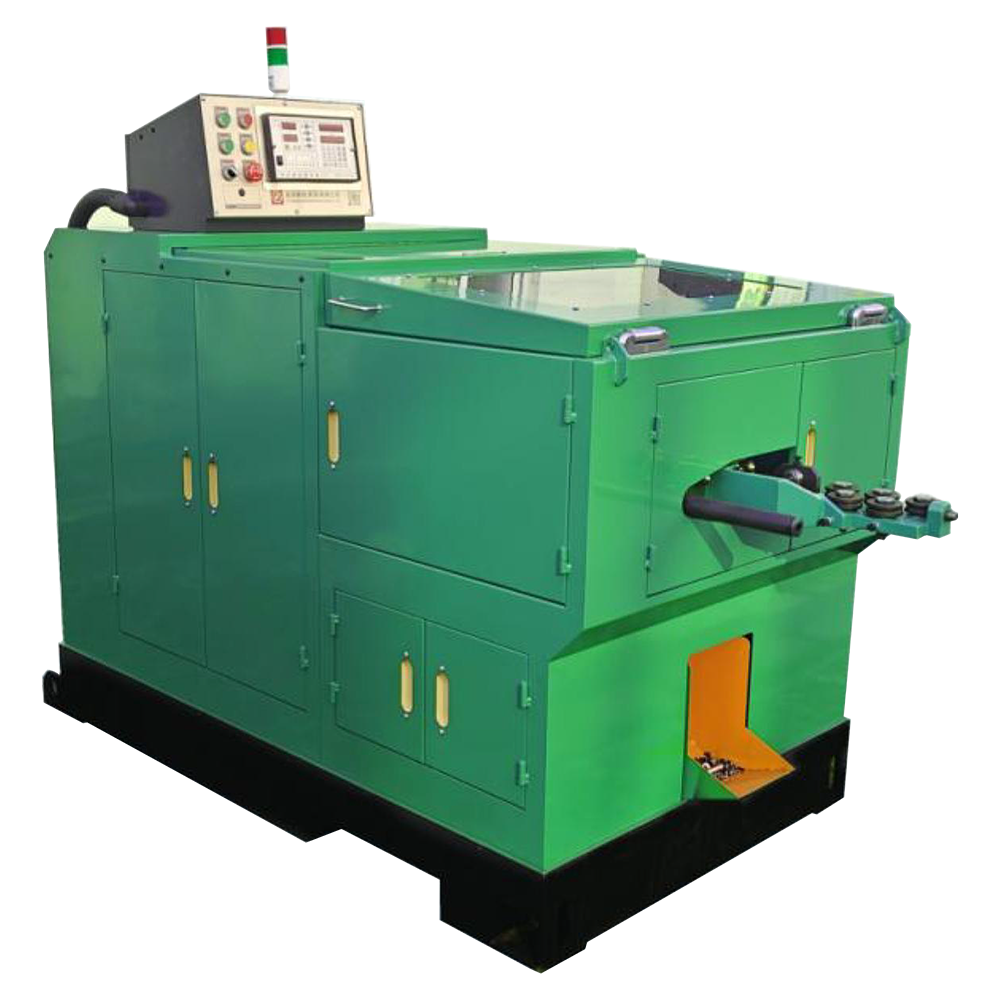This Cold Heading Forming Machine is designed for cold forming metal blanks into fasteners such as bolts, pins, and rivets through one or two forming stations. It focuses on simple, precise shaping without multiple work positions, suitable for stable, medium-to-high volume production. The machine uses controlled punching and pressing to transform raw material into finished parts efficiently, ensuring consistent quality for general industrial applications.
| Model | YTB-1565 | YTB-1565 | YTB-1565 |
| Blank Diameter(mm) | 5 | 5 | 5 |
| Blank Length Max(mm) | 65 | 55 | 40 |
| Stroke(mm) | 92 | 80 | 70 |
| Blanks Per Min | 115-130 | 140-180 | 160-200 |
| Die Dia(mm) | 34.5 | 34.5 | 34.5 |
| Cof-off Die Dia(mm) | 19 | 19 | 19 |
| Punch Die(1st)(mm) | 31 | 31 | 31 |
| Punch Die(2st)(mm) | 31 | 31 | 31 |
| Body Motor | 3HP | 5HP | 2HP |
| Oil Pump motor | 1/4HP | 1/4HP | 1/4HP |
| Overall Dimenslon L*W*H(mm) | 2100*1000*1400 | 2100*1000*1400 | 2100*1000*1400 |
| Weight Approx(kg) | 1650 | 1850 | 1800 |



Cold heading forming machines have become the preferred choice for many manufacturers in industries such as automotive, aerospace, and electronics. Compared to traditional hot forming methods, cold heading offers clear advantages in efficiency, quality, and cost-effectiveness.
First, cold heading delivers superior material utilization. By forming metal at room temperature, it achieves near-net shapes with minimal waste, often saving 15–30% in raw material compared to hot forging. At the same time, the process improves mechanical properties—work hardening strengthens the material, while the natural grain flow is preserved, enhancing fatigue resistance.
In terms of dimensional accuracy, cold heading excels. The process produces tight tolerances and a consistent finish, often eliminating secondary machining. The absence of heat also means better surface quality, free from oxide scale and heat-related defects.
Energy efficiency is another key advantage. Without furnaces or preheating, cold heading reduces energy consumption and lowers the carbon footprint. It also enables faster production speeds, with modern multi-station machines producing hundreds of parts per minute.
From a safety standpoint, cold heading avoids high-temperature hazards, creating a safer and more comfortable working environment. Furthermore, it integrates easily into automated production lines, making it ideal for high-volume, precision manufacturing.
In short, cold heading forming machines combine material savings, higher quality, energy efficiency, and automation readiness, offering a compelling alternative to hot forming for many modern manufacturing needs.
